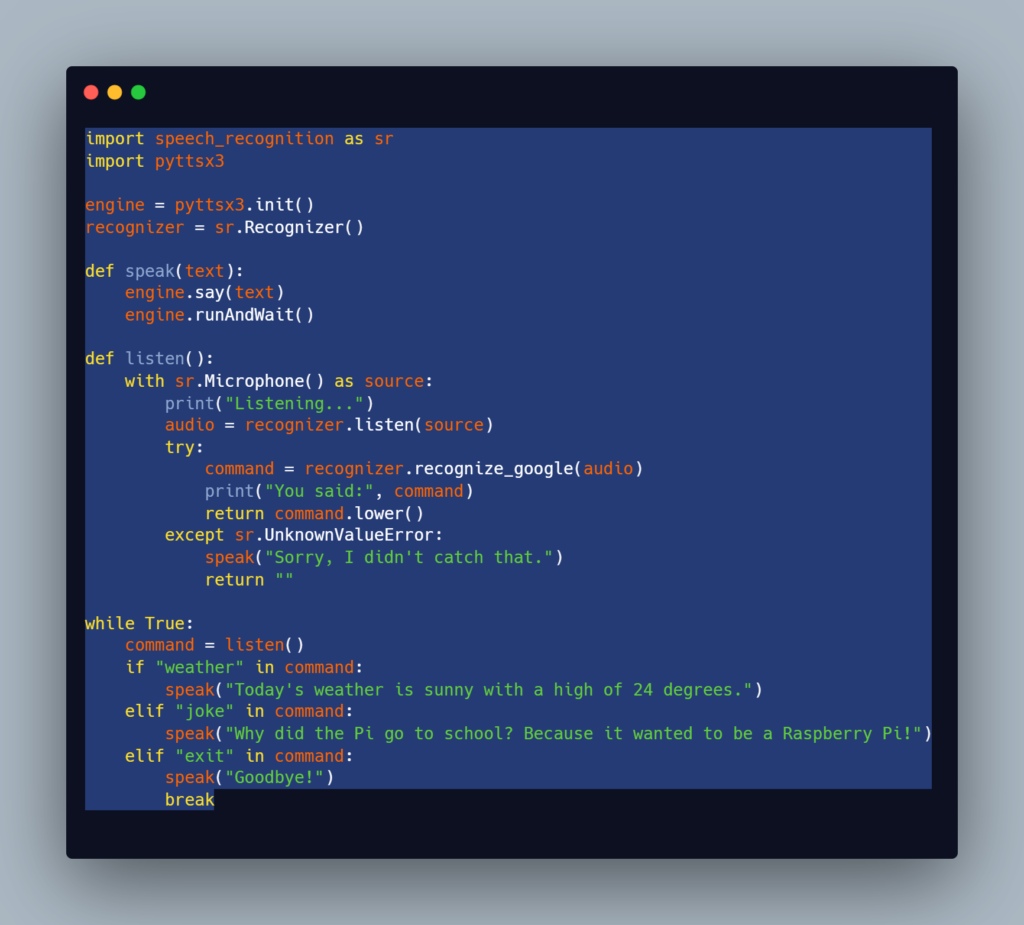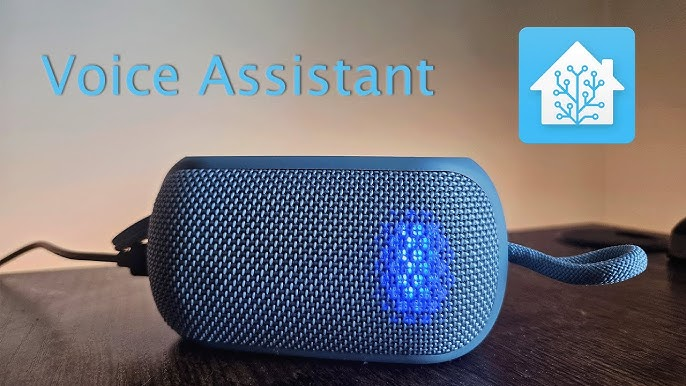Ever wanted to build your own version of Alexa or Siri—but powered by your Raspberry Pi? Now’s your chance. This project brings together voice recognition, AI, and smart automation—all while teaching students about audio processing, Python coding, and Internet of Things (IoT).
Whether you’re a student trying to level up your Raspberry Pi STEM lab skills or a teacher designing a futuristic Raspberry Pi-based STEM curriculum, this project delivers serious STEM power.
What You’ll Build

Your voice assistant will:
- Respond to “wake words” (like “Hey Pi!”)
- Understand voice commands using speech recognition
- Perform tasks like:
- Telling the weather
- Telling jokes
- Controlling smart devices
- Running custom Python scripts
- Telling the weather
- Speak back using a text-to-speech engine
This project is ideal for educational Raspberry Pi projects that blend AI, coding, and creativity.
What You Need
- Raspberry Pi 3 or 4 (with Raspbian OS)
- USB microphone or USB sound card
- Speaker (aux or Bluetooth)
- Internet connection
- Jumper wires (if adding GPIO-controlled devices)
- Optional: LED, relay modules for controlling lights/devices
Bonus: This also doubles as a great addition to your DIY Raspberry Pi STEM lab or tech lab for students!
Optional Wiring for Smart Home Add-ons
For a smart light setup:
- LED long leg (anode) → GPIO pin (e.g., GPIO17 / Pin 11)
- LED short leg (cathode) → 330Ω resistor → GND
Step-by-Step Code Setup
1. Install Required Libraries
bash
| sudo apt update sudo apt install python3-pyaudio pip3 install SpeechRecognition pyttsx3 |
2. Basic Python Voice Assistant Code
python

Add AI & NLP Power
To level this up, connect to:
- ChatGPT API for natural conversations
Wolfram
- Wolfram Alpha API for smart queries
- OpenWeatherMap API for real forecasts
This makes it a killer project for STEM education with Raspberry Pi and real-world problem solving.
Go IoT: Control Devices
Use the GPIO pins to control physical devices with voice commands.
python

Students learn how voice can trigger real-world actions—perfect for Raspberry Pi for STEM and robotics.
Learning Outcomes
- Use voice input & output with Python
- Understand basic AI logic & APIs
- Control devices with code and voice
- Get started with NLP (Natural Language Processing)
- Build an interactive Raspberry Pi project
Perfect for students exploring educational coding with Raspberry Pi or teachers crafting a futuristic Raspberry Pi learning center.
Classroom Extension Ideas
- Assign different teams: one builds voice, another smart actions, another UI
- Expand to include chatbot integrations
- Turn into a voice-controlled classroom assistant
Encourage students to name their AI and customize responses—it becomes hands-on STEM learning with Raspberry Pi and creative storytelling.
Expansion Ideas
- Integrate with smart home tools (like IFTTT or Home Assistant)
- Add a GUI interface with Tkinter
- Set alarms, timers, and reminders
Make this the voice-activated hub of your coding lab setup in schools!

Final Thoughts
A Voice-Controlled Assistant project teaches much more than just coding—it introduces the future of human-computer interaction. For any student or educator looking to go beyond the basics, this is the project to try.
It’s affordable, endlessly customizable, and perfectly aligned with today’s best Raspberry Pi kits for schools.
Next up: We take to the skies with Blog 9 – How to Build a Raspberry Pi-Powered Drone (Yes, Really!)

